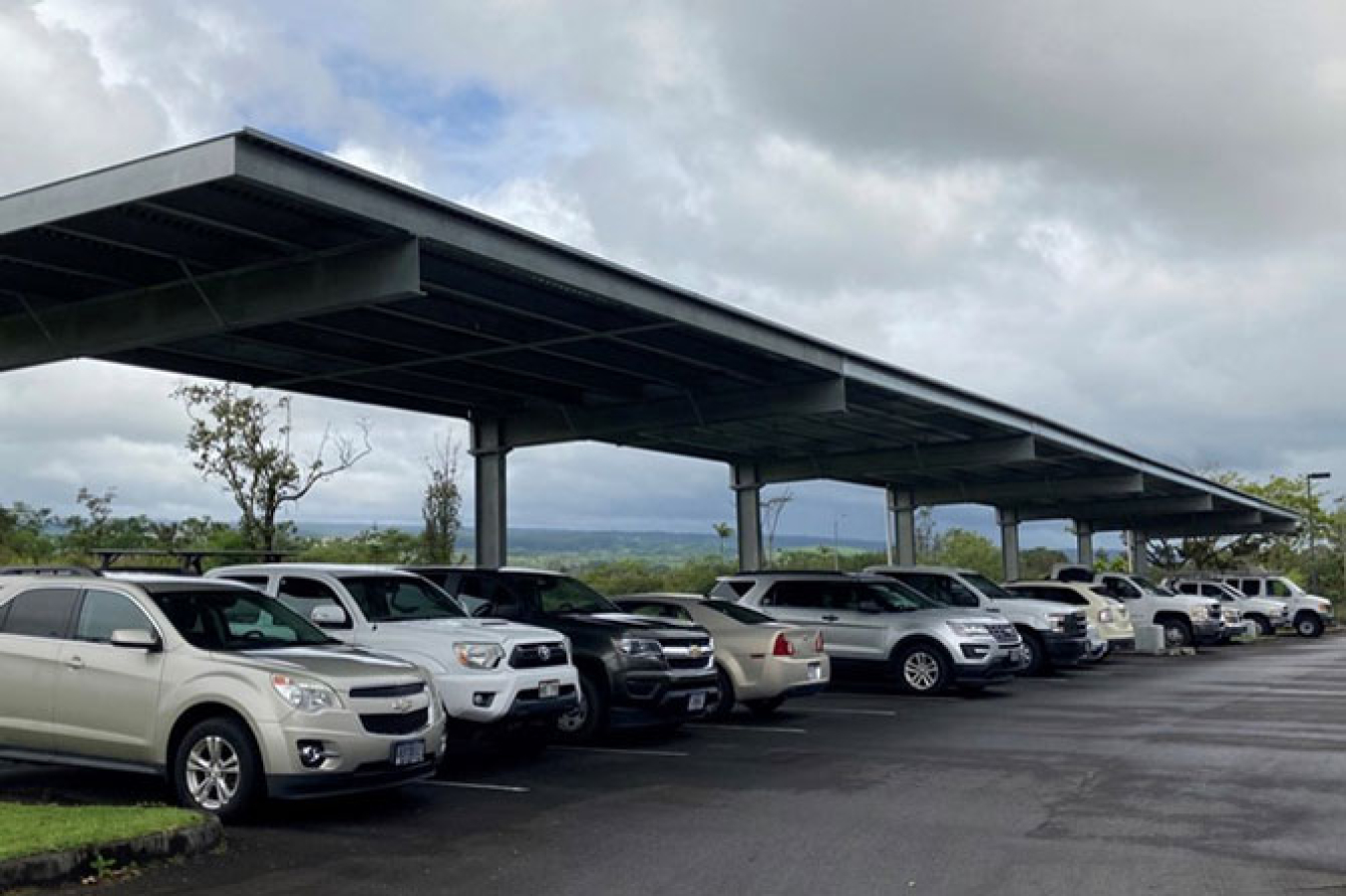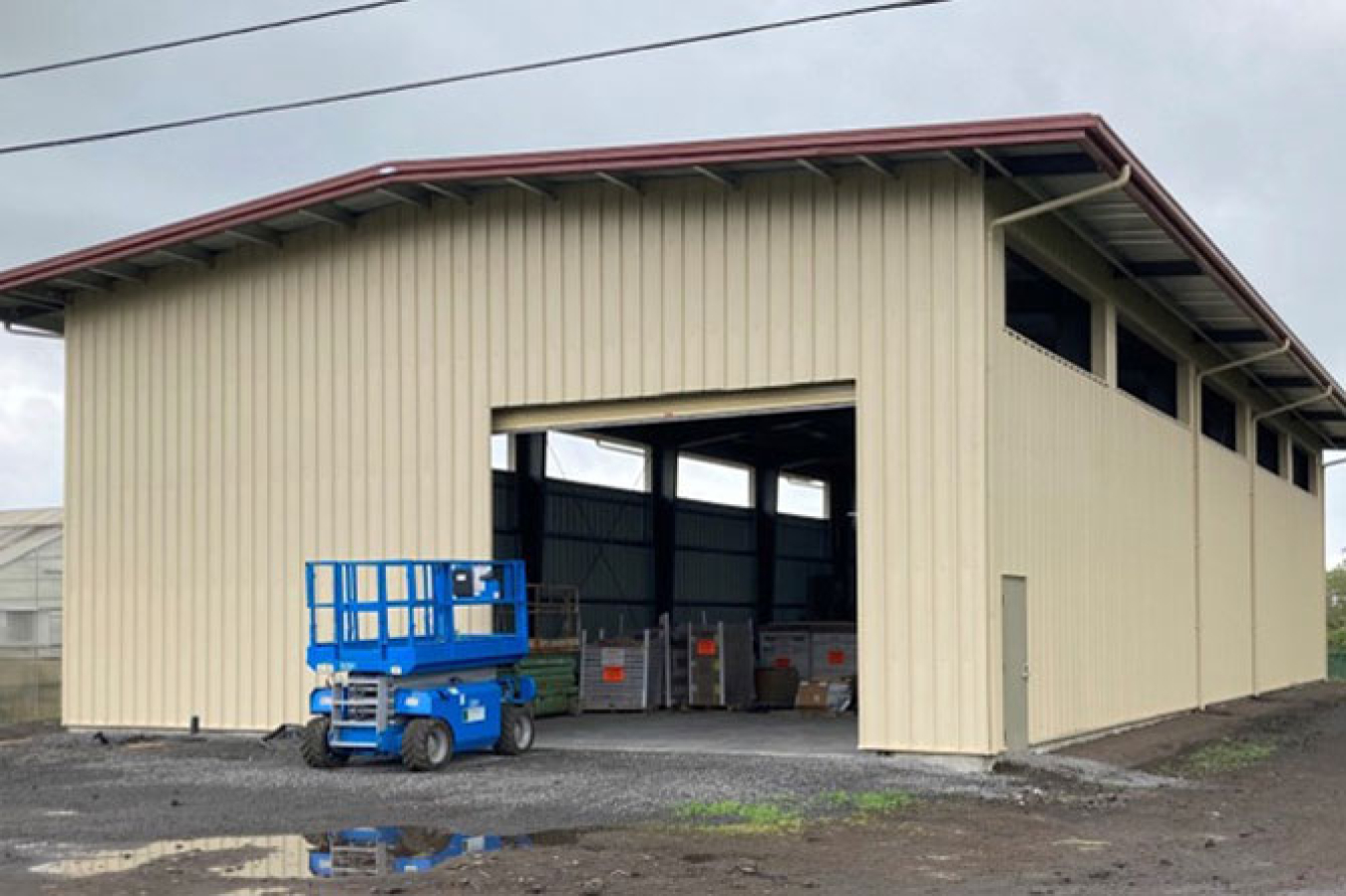| Location | USDA Hilo, Hawaii |
| System Type | Photovoltaic (PV)—Shaded carport and agricultural structure |
| System Size | 171 kW total (75 kW carport and 96 kW agricultural structure) |
| Installation Cost | ~$855,000 |
| Project Completion | 2021 |
| Project Savings | ~245 MWh/year, ~$1.3 million over the 25 year project life |
| Load Service Area | USDA ARS Research Farm—Insectary |
| Project Champion | Sandy Morgan |
| FEMP Assistance | Feasibility study, design development and review, request for proposal (RFP) development, contract award support, construction support |
Key Lesson Learned
Existing arrays that have significant deferred maintenance can be incorporated into a broader scope when installing existing systems.
The U.S. Department of Agriculture (USDA) Agricultural Research Service's (ARS) Daniel K. Inouye U.S. Pacific Basin Agricultural Research Center located on the Hawaiian Island of Hilo is a 36-acre campus with full-time research and administrative staff.
Energy manager, Sandy Morgan, used appropriations for the project given previous challenges with contracting on the Islands where labor and material costs are high due to the logistics of moving material, equipment, and supplies. Though the solar photovoltaic (PV) project was small, the site's electricity prices made this site a priority for USDA ARS.
The site had an existing, offline solar array that was in need of repairs and restoration of the system was a priority. It had costly deferred maintenance issues that required a new inverter in addition to other expensive repairs.
Planning and Implementation
Space Constraints
Learn More
USDA Research Farm's PV system provides "future proofed" net-zero electricity.
The site is highly space constrained with no available land area for a solar array that could meet the site’s energy usage. This prompted the Federal Energy Management Program (FEMP) and USDA ARS to consider additional locations for solar PV, including laydown areas and the use of solar agricultural structures (i.e., structures analogous to carports for agricultural equipment).
The USDA ARS energy manager worked closely with the site managers to use a pole-barn structure, an inexpensive type of agricultural structure which is common on USDA ARS sites across the country, to provide the roof area needed for the solar array. A site for a pole barn was identified that could also be used by the researchers as covered storage for insectarium chambers.
In addition, "EV Ready" solar structures were installed.
The Solar PV Ag-Structure ConceptMany other agency sites store large amounts of fleet vehicles, equipment and supplies outside. By constructing structures, solar PV arrays can be installed, and the equipment is protected from exposure to the elements. |
Using Appropriations
USDA ARS was not able to fund the entire project (i.e., installation of carports and the solar agricultural structure complete with solar PV systems) at once.
The project was split into three phases:
Phase 1: Construction of the solar-ready shaded carports

Solar carports on Pacific Basin parking lots
Phase 2: Construction of the solar-ready agricultural structure

Solar-shaded agricultural structure on Pacific Basin site.
Phase 3: Installation of a solar PV system on the carport and agricultural structure
The project is now in its third phase and solar PV installation is nearly complete. Complex projects can be successfully broken into phases and executed over a few budget periods. The carports and agricultural structure have stand-alone high value, and if solar had not been installed, the site would still benefit from these structures thereby reducing risk.
Addressing an Existing Non-Functional Solar Array
The site has a small (40kW) existing roof mounted solar array that had been offline. The PV installation on the carports and agricultural structure was broadened to include bringing the existing solar array back into working condition and reconnecting power meters.

